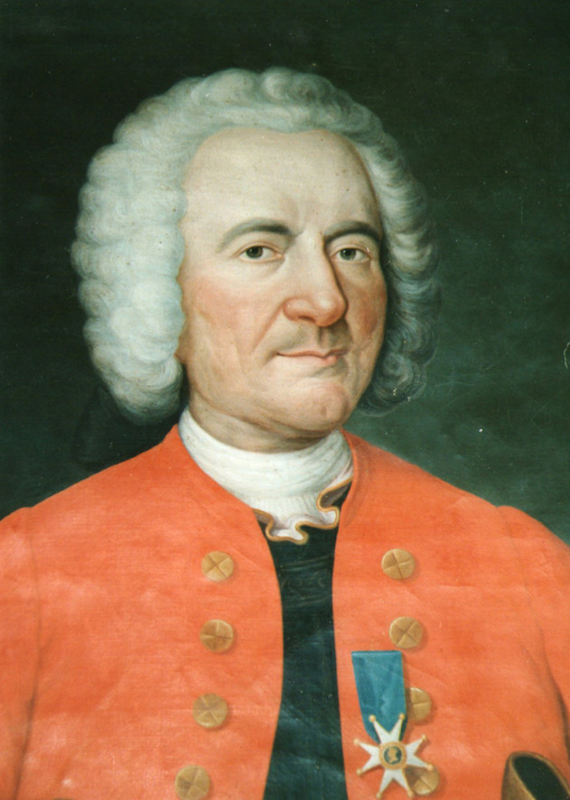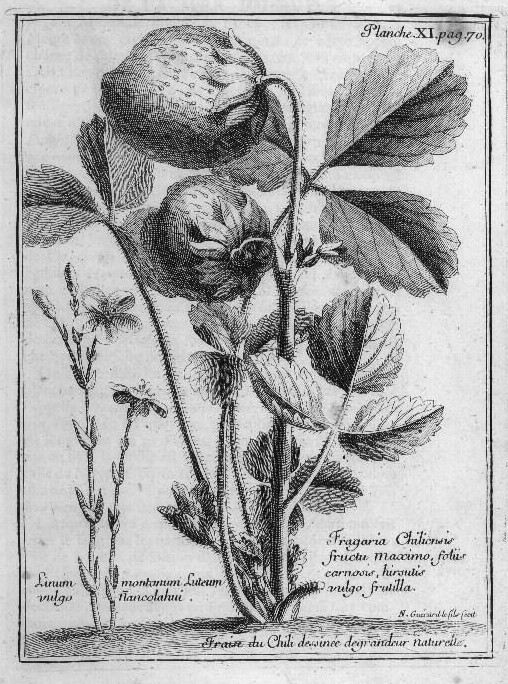A spy, a botanist and a strawberry
1712, Europe
The year was 1712. An engineer in the French Army Intelligence Corps named Amédée-François Frézier was sent by King Louis XIV on a reconnaissance mission to Chile. Between covert visits to Chilean military fortifications where he posed as a tourist in order to gain access, Frézier was also charged with documenting the local flora and fauna. One day he came upon a familiar sight: a berry that looked similar to one he knew from Europe, but significantly larger. Frézier described this larger fruit in his journals:
“They there plant whole fields with a sort of strawberry rushes, differing from ours, in that the leaves are rounder, thicker, and more downy. The fruit is generally as big as a walnut, and sometimes as a hen's egg, of a whitish red, and somewhat less delicious of taste than our wood strawberries.”
In Europe and Russia, the small woodland species of strawberry, the fraises des bois (Fragaria vesca) and the musk strawberry (Fragaria moschata), had been grown for centuries. The larger fruit Frézier encountered, the Chilean strawberry (Fragaria chiloensis), had been cultivated by native peoples in the region for almost 1000 years.
Frézier packed up some of these plants and took them back to France where they were planted among other species. The crossing of Fragaria chilenosis with another species from the new world, Fragaria virginiana, resulted in a hybrid that would eventually become the strawberry we know today. At the time it was called the pine- or pineapple-strawberry, as French botanist Antoine Nicolas Duchesne had named it Fragaria x ananassa because it's flavor was reminiscent of pineapple (the pineapple is in the genus is Ananas).
This hybrid species spread quickly across Europe, with new cultivars being selected and cultivated in England and other countries by 1800. Eventually the hybrid made its way back across the Atlantic and took hold in North and South America.
“They there plant whole fields with a sort of strawberry rushes, differing from ours, in that the leaves are rounder, thicker, and more downy. The fruit is generally as big as a walnut, and sometimes as a hen's egg, of a whitish red, and somewhat less delicious of taste than our wood strawberries.”
In Europe and Russia, the small woodland species of strawberry, the fraises des bois (Fragaria vesca) and the musk strawberry (Fragaria moschata), had been grown for centuries. The larger fruit Frézier encountered, the Chilean strawberry (Fragaria chiloensis), had been cultivated by native peoples in the region for almost 1000 years.
Frézier packed up some of these plants and took them back to France where they were planted among other species. The crossing of Fragaria chilenosis with another species from the new world, Fragaria virginiana, resulted in a hybrid that would eventually become the strawberry we know today. At the time it was called the pine- or pineapple-strawberry, as French botanist Antoine Nicolas Duchesne had named it Fragaria x ananassa because it's flavor was reminiscent of pineapple (the pineapple is in the genus is Ananas).
This hybrid species spread quickly across Europe, with new cultivars being selected and cultivated in England and other countries by 1800. Eventually the hybrid made its way back across the Atlantic and took hold in North and South America.

Amédée-François Frézier

Illustration of Fragaria chiloensis from a book of illustrations created during Frézier's travels in Chile and Peru in 1712-1714